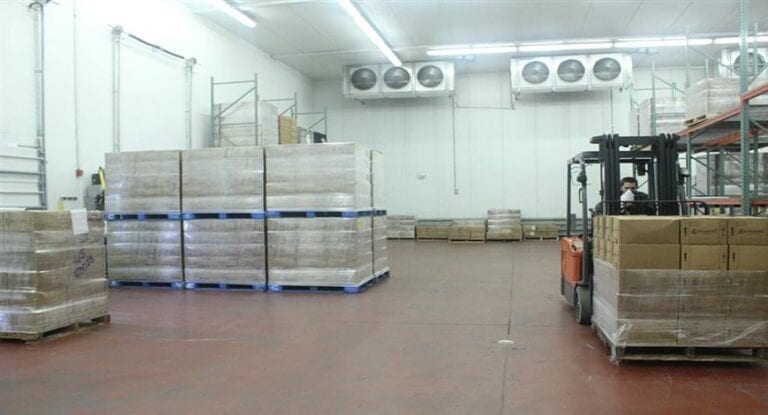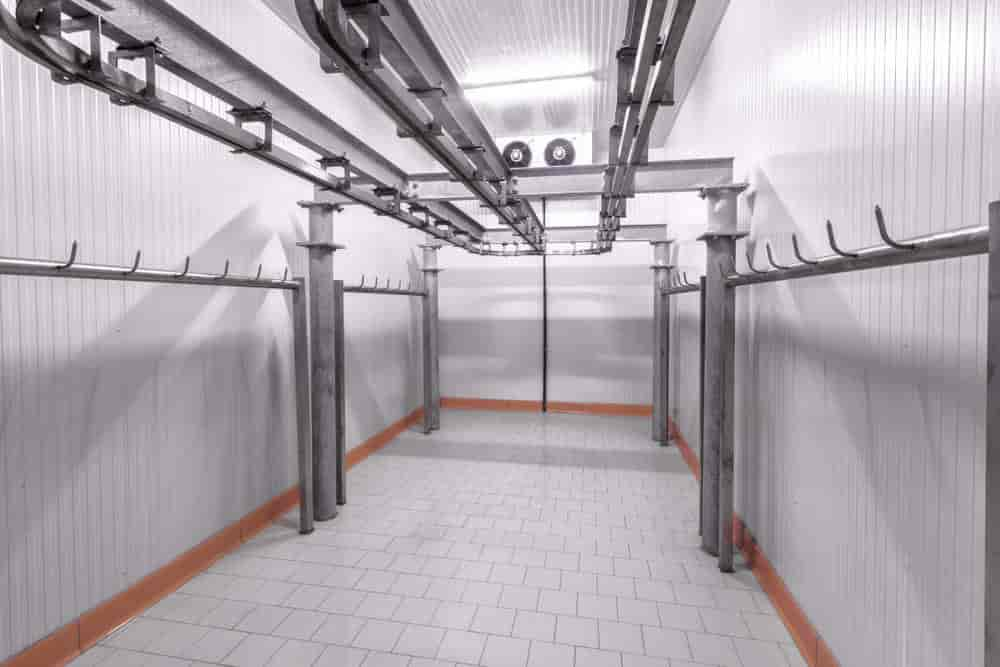Cold Storage is used to store products that have specific temperature requirements to avoid decay or contamination. Another reason is that if a food product is not temperature controlled, it might get spoiled and lead to a massive inventory being thrown away due to improper maintenance. All food products have distinct requirements and cold storage techniques. There must be appropriate cold storage for different foods to stay fresh for long durations of time, and that too with minimum cost consumption and the most negligible product loss. Freezing extends storage life by slowing the physical changes and chemical and microbiological activity that cause deterioration.
A variety of cold storages are used depending on the type, product quantity, and the time the product needs to be stored. An excellent cold storage provider can make a significant difference in the success of a business, as the product quality needs to remain top-notch and in line with the business’s brand. It also plays a crucial role in regulating proper storage and distribution costs and, in turn, maintaining customer satisfaction. Based on present-day purposes, cold stores are classified into the following groups:
1. Bulk Cold Stores
These stores are generally used for storing a single commodity that operates on a seasonal basis: for example, stores for potatoes, apples, chillies, et cetera. Seasonal cold storage is an environmentally friendly and highly efficient technique. It uses the stored natural cold energy in the winter for free cooling in the summer. The cold energy produced is stored in the form of ice in an insulated tank. It is extracted as chilled water for cooling supply in summer, which helps to decrease the chiller running time and bring down the associated electricity consumption and greenhouse gas emission significantly.
2. Multi-purpose Cold Stores
These are designed to store various commodities and products used throughout the year and include different types of meat like lamb and chicken. A cold store operational programme (products, chilled storage and freezing) is designed with specific parameters. These units are mainly located near the consumption centres.
3. Small Cold Stores
These cold stores are designed with pre-cooling facilities for produce that is to be exported, such as fresh fruits like grapes etc. Small scale producers can choose from various options when it comes to cooling systems, including those that utilise mechanical refrigeration, electric-based or passive evaporative cooling. The selection should be based on the pre-cooling system’s cost, efficacy and safety for the type of product to be cooled and the expected financial profits.

4. Frozen Food Stores
These food stores are designed with processing and freezing facilities, optional for food items such as fish, meat, poultry, dairy products and processed food and vegetables. Frozen foods generally have an excellent safety record. They are typically stored around a temperature of -18C, which is the commercial standard for food preservation. For dried and frozen foodstuffs to not become contaminated during long periods of storage, they should not undergo any structural or chemical changes. Frozen foods are either thawed or tempered before further processing. At the industrial level, thawing is done by putting frozen foods in water for an extended period. In tampering of frozen foods, their temperature is brought just below freezing to make chopping and handling easier. One of the most significant advantages of freezing preservation is the convenience and facility of protection with a negligible impact on food quality compared to other techniques for conservation such as thermal or drying. Although every product has a unique storage temperature ideal for its contents, most frozen food products are stored between 0 to minus 30ºF.
5. Mini Units/Walk-in Cold Stores
These are located at distribution centres. Walk-in cold stores can be utilised for multiple applications in the pharmaceutical, cosmetic, food and beverages, dairy and other industries for all sorts of products intended for storage at low temperatures. Walk-in freezers that look identical to walk-in cold rooms can operate at far lower temperatures and are designed to store consumables for months. They have a temperature range of -18C to -22C.
6. Controlled Atmosphere (CA) Cold Stores
These are designed for specific food and vegetables mainly. It is a system in which fresh, perishable products such as fruit and vegetables are stored under environmental conditions that add to their shelf life after the produce is harvested from the crop. In the last fifty years, CA storage has become a fundamental aspect of the food storage industry, making it possible for even seasonal fruits and vegetables to be available all year round. This storage process is a non-chemical technology that uses low oxygen levels and high carbon dioxide levels in the storage atmosphere and refrigeration. Sometimes it also involves the removal of ethylene and the addition of carbon monoxide. Since this type of cold storage is capital intensive and expensive to operate and maintain, it is more appropriate for those foods befitting long-term storage, such as kiwis, apples, and pears. Additionally, it has great potential for preserving vegetables that have a high respiration rate. Controlled Atmosphere Storage has been a seminal innovation introduced to the food storage industry and has multiple advantages.
Cooling is considered one of the most integral steps in the post-harvest handling chain. Reducing the temperature of fresh produce after harvest significantly reduces respiration rate, boosts shelf-life, and protects quality. It is also essential because cooling reduces volume losses by minimising water loss and slowing the decay rate. The industrial cold storage rooms are made especially to store a large quantity of food. They are primarily made for industries, and generally, a vehicle is required to transport goods from a place to the refrigerator. Since much produce is stored in the storage room, these rooms are made with pallet racks and oversized doors. Cold rooms are essential because they help to prolong the shelf life of fresh goods. They are also effective in reducing waste and lengthening the timespan for marketing these foods.
Related posts
- 6 Major Advantages of Cold Storage
- 8 Best Practices in Managing a Cold Storage
- Cold Storage: Challenges & Opportunities
- Pallets
- What Is Warehousing?
- Chennai Warehousing Market Report – 2020
- Warehousing in Delhi/NCR – Report 2021
- Warehousing In Hyderabad : Report 2021
- Industries And Applications of Cold Storage
- 5 Core Functions Of Third-Party Logistics (3PL) Providers
- 10 Practical Tips To Reduce Warehouse Costs
- 11 Best Warehouse Management Systems (WMS)
- Going Up: Logistics Leaders Solve Warehouse Space Constraints
